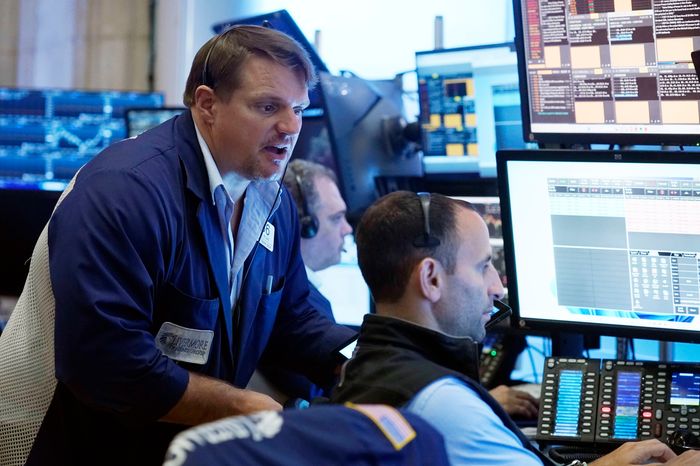Interplay of The Federal Reserve, Economic Trends, and Financial Dynamics
As we approach the end of this volatile year, we’re not out of the woods yet, as the threat of a recession in the new year looms heavy. With the Federal Reserve’s strategies, shifting dynamics between equity and bond markets, and external global influences, the investment landscape is anything but static. To find opportunities, investors must make sense of the markets, which can be done by distilling some key information.
Equity vs. Bond Dynamics
The equity market has seen a remarkable turnaround this year with a 12% growth YTD, a significant recovery from the challenges of 2022. However, this growth isn’t evenly distributed. A massive 33% of the S&P 500’s market cap is held by just its top 10 stocks, indicating a high concentration of wealth and influence. When the wealth of all 500 companies is taken into account, the growth rate is a mere 2%. In contrast, the bond market hasn’t mirrored the equity’s optimism. It’s faced challenges for three consecutive years, marking a 1% decline this year. Such contrasting performances highlight the need for diversified portfolios.
Impact of Interest Rates
Last year, the Federal Reserve might have hinted at a return to normalization after a few hikes, but the current rhetoric suggests a preparedness for “higher for longer” interest rates. This implies that we might not just see a one-off increase but rather a sustained period where interest rates are maintained at elevated levels to ensure economic stability.
This more hawkish approach by the Fed has had ripple effects across the financial landscape. From affecting bond yields and trades to influencing decisions of institutional and sovereign investors, the impact of these rate hikes is profound. Furthermore, the disconnect between market predictions and the Fed’s projections has added uncertainty. While the Fed’s actions aim to fortify the economy against runaway inflation, they also present challenges, especially in sectors sensitive to interest rate changes.
Sector Performance Variances
Not all sectors have experienced the same market dynamics. Rising interest rates have notably impacted sectors such as real estate and utilities, causing them to underperform. This sensitivity to rate changes is crucial for investors to understand as they assess risk. On a brighter note, the surge in technological advancements, particularly AI in the large-cap growth sector, has been a bullish factor for the market.
Housing Market and Labor Dynamics
The housing market is often viewed as an economic health indicator. Currently, its dynamics are intricate. Those who locked in mortgages at lower rates in past years are enjoying their decisions, leading to decreased housing transactions. This situation has created an unexpected beneficiary – homebuilders. They are thriving, and it’s attributed to the supply-demand imbalance. Simultaneously, the labor market’s robustness is commendable. The job market has remained resilient, but the widening gap between wage growth and inflation is a growing concern, hinting at potential challenges ahead.
Inflation Factors
The looming shadow of inflation has been a dominant concern for businesses and consumers alike. Companies are wrestling with the dual challenges of escalating capital costs and wage demands. The question arises: how long can these costs be passed onto consumers? Surprisingly, the traditional sectors driving inflation, like energy, are being overshadowed. Now, everyday sectors such as food, transportation, and housing are leading the inflationary charge.
Recession Outlook: Predictions, Resilience, and Inflation’s Impact
Economic forecasts lean towards a potential recession, with over a 55% probability in the next four months. Despite these predictions, the economy has shown remarkable resilience, buoyed by the robust labor market and increased spending. For investors, the market’s forward-looking nature means it’s not just reflecting today’s status but predicting future scenarios, including anticipated company earnings growth. With its lingering effects, inflation has caused many to re-evaluate investment strategies, leading some to consider risk-free options like CDs. Amid these complexities, staying informed and adaptable remains paramount for investors navigating this dynamic financial landscape.
Broadening the Perspective
While it’s essential to understand domestic financial intricacies, our interconnected world necessitates a more global view. Various international events have the power to influence our markets significantly, and being aware of these dynamics allows for a more informed investment approach.
- Geopolitical Tensions in the Middle East: Historically, the Middle East has been volatile, with its geopolitical dynamics often influencing global energy prices. Any unrest or uncertainty in this region can lead to fluctuations in oil prices, which, in turn, can impact everything from transportation costs to consumer goods prices worldwide. Monitoring these tensions is crucial, as they can have broad implications for inflation, global trade, and overall market sentiment.
- Student Loan Debts: Though domestic, this issue has global ripples. The U.S. student loan debt has reached staggering levels, and its potential implications are multifaceted. On a personal level, it affects the consumption patterns of the younger generation, potentially delaying milestones like home purchases or starting a family. On a macroeconomic scale, any significant policy changes regarding student loan forgiveness or repayment could affect financial institutions and taxpayers.
Navigating the financial markets demands a comprehensive understanding of localized and global trends. With the world ever-evolving, staying informed, adaptable, and diversified remains the key to navigating the financial future.
Guidance for Investors
For investors, today’s market scenario tests strategy and patience. Thanks to areas like the labor market and consumer spending, economic resilience offers some solace. But, it’s vital to remember that markets often anticipate future events. While seemingly secure options like CDs might appear attractive during market volatility, they come with inherent opportunity costs. Hence, adhering to a diversified investment strategy is advisable.
If you’d like to learn more or have any questions about economic issues, please contact us.
- Alphabet stock pullback a buying opportunity - July 25, 2024
- Prime Capital Investment Advisors Welcomes James Burton as Independent Director of Advisory Board - July 15, 2024
- How Tax Planning Differs For Young Clients - July 15, 2024

